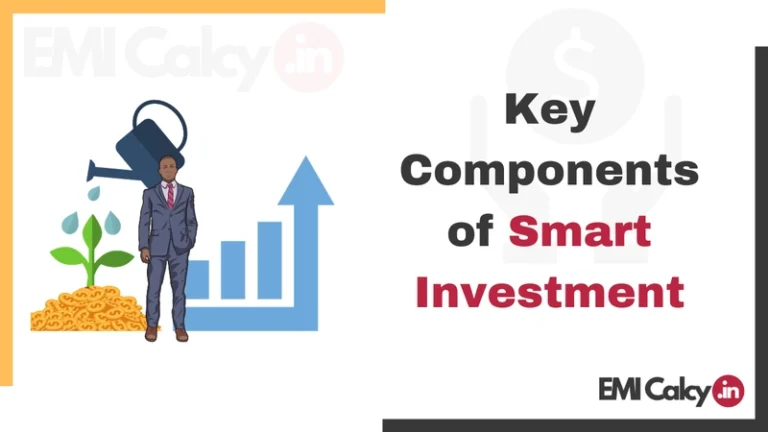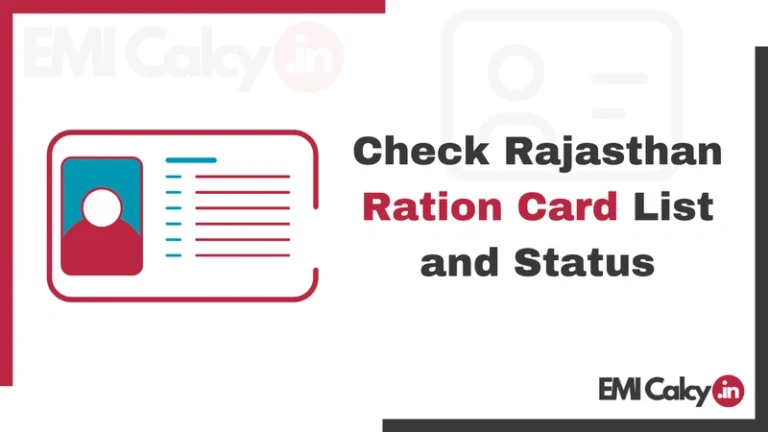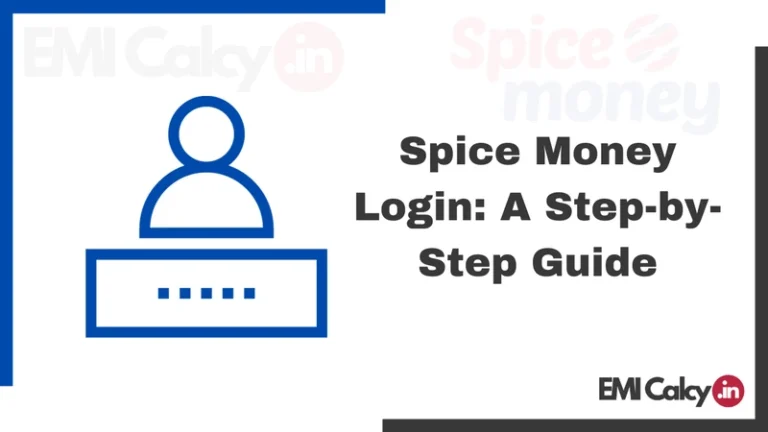Buying a home is a significant financial milestone, and for many, it often involves taking out a home loan. However, circumstances can change over time, and what was once the perfect loan may no longer suit your needs. This is where the option of transferring your home loan from one bank to another becomes valuable.
In this article, we will learn how to transfer a home loan from one bank to another and the essential steps for transferring your home loan. From understanding the compelling reasons for home loan balance transfers to delving deep into the nitty-gritty of the process, we’ll cover it all with thorough detail and precision.
Why Consider Transferring Your Home Loan?
Before we start into the intricate details of transferring your home loan from one bank to another, it’s of paramount importance to understand why you might consider this option. There are myriad compelling reasons to do so, each with its own unique set of circumstances and advantages:
Lower Interest Rates
One of the primary and most compelling reasons to transfer a home loan is the possibility of taking advantage of lower interest rates offered by another bank. Even a marginal reduction in interest rates can substantially lower your monthly EMI (equated monthly installment) and, in the long run, diminish the overall cost of your loan.
Better Loan Terms
If your current lender has proven to be inflexible with their terms and conditions, you might discover another bank that offers more favorable and pliable conditions. This could include a more extended tenure or the possibility of securing a higher loan amount, both of which can be instrumental in enhancing your financial well-being.
Improved Customer Service
In the journey of homeownership, superior customer service can be a game changer. A bank that provides responsive support, efficient grievance resolution, and a more customer-centric approach can make managing your home loan a less stressful and more gratifying experience.
Reducing the Financial Burden
Sometimes, life’s multifaceted challenges may necessitate consolidating your loans or other financial obligations with your home loan to secure a lower interest rate. Not only does this reduce the financial burden, but it also simplifies your monthly repayments, streamlining your financial life. This home loan EMI calculator help you on your journey.
Top-Up Loan Facility
A home loan balance transfer can also offer an enticing opportunity to acquire a top-up loan. This is a supplementary loan over and above your existing home loan amount. These additional funds can be used for various purposes, such as home renovation, investment in another property, or addressing other pressing financial requirements.
The Home Loan Transfer Process
Transferring home loans is a meticulously systematic process that involves several well-defined and interlinked steps. To ensure a seamless transition, let’s break down each of these steps with intricate attention to detail and clarity:
Related: How to Reduce EMI of Existing Personal Loans
Step 1: Assess Your Current Loan
Before you embark on the odyssey of transferring your home loan, it’s absolutely vital to conduct a comprehensive and meticulous evaluation of your current loan. Here are the key aspects that warrant your attention and scrutiny:
Outstanding Principal Amount
Begin by meticulously inspecting your loan statement to determine the precise outstanding principal amount, which is essentially the remaining balance on your home loan at the current juncture.
Interest Rate
The next crucial step is to meticulously note the current interest rate that you are diligently paying on your home loan. This interest rate serves as the bedrock for your financial decision-making process.
Loan Tenure
Gain a crystal-clear understanding of the remaining tenure of your loan. This is a crucial element that affects the calculation of your EMI and, by extension, the total interest payable over the loan’s duration.
Equated Monthly Installment (EMI)
You must meticulously calculate your current EMI, which represents the exact amount you conscientiously remit every month to service your home loan. Understanding this financial commitment is central to home loan balance transfer decisions.
Prepayment Charges
It is prudent to delve into the terms and conditions of your existing loan to scrutinize whether prepayment charges apply. Some banks do impose a fee when loans are repaid before the agreed-upon tenure, and you should be aware of these potential financial implications.
Related: Longer Bank Loan EMI Tenure Pros and Cons
Step 2: Research and Choose a New Lender
The second step in this elaborate process is the judicious task of researching, evaluating, and selecting a new lender for your home loan. This is a pivotal decision that can significantly impact your financial health and, as such, should be approached with a blend of diligence and discernment. Consider the following factors:
Interest Rates
Foremost, you should actively look for a lender that offers a lower interest rate than your current one. Even a marginal reduction can have a domino effect, leading to significant savings in both the monthly EMI and the overall cost of your loan over its lifespan.
Loan Terms and Conditions
Dive deep into the terms and conditions offered by different lenders, each with its own set of advantages and constraints. Some lenders might be more amenable to flexibility, such as offering a longer tenure, a higher loan amount, or the option for a top-up loan.
Processing Fees
Be prepared to navigate the landscape of processing fees. While evaluating a potential new lender, it’s wise to scrutinize the processing fees they charge for home loan balance transfers. There may be room for negotiation, and a successful negotiation can result in more favorable terms for you.
Customer Service
The relationship you establish with your lender is central to your homeownership experience. Research and gain insights into the reputation of the new lender concerning customer service and responsiveness. An efficient and responsive lender can significantly enhance your experience.
Eligibility
Ensure that you meet the eligibility criteria set forth by the new lender. These criteria often include factors such as your credit score, income, and the current value of your property. Fulfilling these requirements is a prerequisite for the successful transfer of your home loan.
Step 3: Apply for a Home Loan Balance Transfer
Once you have meticulously selected your new lender, it’s time to initiate the home loan balance transfer process. This process involves several pivotal steps that necessitate your meticulous attention and adherence:
Contact the New Lender
Your first point of contact should be with the chosen bank that you’ve identified as the best fit for your home loan transfer. Communicate your intent to transfer your home loan to them, and they will provide you with detailed guidance on the application process.
Provide Required Documents
Be prepared to meticulously submit a comprehensive set of documents as stipulated by the new lender. These documents typically encompass identity proof, address proof, income proof, and various property-related documents. The precise requirements will be conveyed to you by the new lender.
Complete the Application
The next step is to meticulously fill out the application form for the balance transfer and subsequently submit it, accompanied by all the essential and stipulated documents. Attention to detail and precision in completing this application is of paramount importance to avoid any unwarranted delays in the process.
Credit Appraisal
The new lender will meticulously and exhaustively conduct a credit appraisal. This appraisal is essentially an in-depth analysis of your creditworthiness. The importance of a robust and positive credit score cannot be overstated in this context, as it plays a pivotal role in determining the success of your loan balance transfer.
Related: How to Build an Emergency Fund Fast in India
Step 4: Verification and Legal Checks
The new lender will embark on a series of meticulous checks and verifications to ensure that both the property and the borrower meet their stipulated criteria. These checks are designed to guarantee the veracity of the transaction and minimize financial and legal risk. These checks often include:
Property Valuation
The new lender will meticulously inspect and assess your property to ascertain its current market value. This is a pivotal step in the process, as it informs the lender about the financial implications of the home loan balance transfer.
Legal Verification
To guarantee the legality and legitimacy of the property transaction, the new lender will undertake comprehensive legal verification. This verification process is designed to confirm that there are no legal disputes or pending legal issues associated with the property.
Title Search
One of the central legal checks involves a title search. This search is aimed at ensuring that the property title is clear and unencumbered. In other words, it verifies that there are no unresolved financial claims or liens on the property title.
Due Diligence
As part of the verification process, the new lender will perform meticulous and comprehensive due diligence. This due diligence extends to a thorough and all-encompassing assessment of your financial history, creditworthiness, and the overall credibility of the property transaction.
Step 5: Sanction and Disbursement
If the new lender is satisfied with the results of their verification and legal checks, they will proceed to sanction the loan and issue a formal letter of approval. This stage is instrumental in moving the process forward and includes the following crucial steps:
Letter of Approval
After the lender has conducted its due diligence and is satisfied with the verification process, you will receive a formal letter of approval. This letter meticulously outlines the terms and conditions of the newly sanctioned loan.
It’s essential to scrutinize this document with great care, ensuring that you have complete clarity on the terms and obligations.
Prepayment to the Old Lender
With the letter of approval in hand, you can now proceed to request a foreclosure statement from your existing lender. This statement, provided by your current lender, will detail the precise amount that you are required to remit to close your current loan. Timely and accurate remittance of this amount is essential for a seamless transition.
Loan Disbursement
Upon completion of the above steps, the new lender will disburse the approved loan amount to your old lender. This disbursement effectively closes your existing home loan with the old lender, thereby marking a significant milestone in the home loan balance transfer process.
Step 6: Loan Closure with the Old Lender
With the disbursement of the new loan, the next crucial step involves the meticulous and methodical closure of your old loan with the previous lender. This is a pivotal step in the process and requires thorough attention to detail. The steps involved include:
Foreclosure Statement
The first and foremost step in this process involves collecting the foreclosure statement from your old lender. This statement is a comprehensive and detailed document that outlines the outstanding principal amount, interest, and any applicable charges.
This document is central to determining the exact amount that you need to remit to close your existing home loan.
Prepayment
With the foreclosure statement in hand, you are now in a position to proceed with the prepayment. This entails remitting the precise amount mentioned in the foreclosure statement to your old lender. By fulfilling this financial obligation, you effectively clear the outstanding home loan, a pivotal step in the balance transfer process.
No Objection Certificate (NOC)
After the successful prepayment and closure of your old loan, you should diligently request a No Objection Certificate (NOC) from your existing lender. The NOC is a formal document that conclusively and unequivocally confirms the closure of your home loan, thereby releasing you from any financial obligations or encumbrances.
Property Documents
As part of the closure process, you should also collect all the original property documents from your old lender. These documents, often held as collateral, will be formally transferred to the new lender upon successful completion of the balance transfer.
Step 7: Commence Repayment with New Lender
With the closure of your old loan with the previous lender, you are now in the final phase of the balance transfer process. This phase involves the initiation of repayment with the new lender, marked by the following meticulous steps:
Set Up EMI Payments
The first step in this phase involves the diligent and precise setup of EMI payments with your new lender. This is typically done through the establishment of a standing instruction that ensures timely and seamless EMI payments in adherence to the terms and conditions outlined in the sanction letter.
Stay Informed
As you commence your repayment journey with the new lender, it is essential to remain vigilant and informed. Keep a watchful eye on your loan account and meticulously review your monthly statements to ensure that everything is in order. This practice ensures that you are fully aware of your financial commitments and can address any discrepancies promptly.
Utilize the Top-Up Loan
If you’ve chosen to opt for a top-up loan as part of your balance transfer, you can now put these additional funds to practical use. The top-up loan represents a supplementary and flexible financial resource that can be used for a variety of purposes, including home renovation, property investment, or addressing other pressing financial requirements. Make informed and prudent decisions regarding the utilization of this resource to maximize its benefits.
Conclusion
Transferring your home loan from one bank to another can be a financially beneficial move, especially when you find a lender offering lower interest rates, better terms, or improved customer service.
However, it’s crucial to understand the eligibility criteria, documentation requirements, and the overall process. By following the steps outlined in this guide, you can make an informed decision to ensure your home loan suits your financial needs and goals.
Always remember to conduct thorough research and consult with financial advisors if needed before making this important decision.
FAQs about Transferring Home Loans from One Bank to Another
Can I switch my home loan from one bank to another?
Yes, it is possible to switch your home loan from one bank to another in India. This process is commonly known as a home loan transfer or balance transfer. Many banks and financial institutions offer this facility to help borrowers take advantage of better interest rates, more favorable terms, or improved customer service.
Are there any charges for transferring a home loan?
Yes, there are charges involved, including processing fees, prepayment charges, legal and documentation fees, and stamp duty.
What documents are required to transfer a home loan to another bank?
You will typically need loan account statements, the original sanction letter, property-related documents, KYC documents, bank statements, and employment proof. Specific requirements may vary between banks.
What is the eligibility criteria for a home loan balance transfer?
To be eligible for a balance transfer, you typically need to maintain a good and positive credit score, demonstrate stable and sufficient income, and possess a property that aligns with the lender’s stipulated criteria.
How long does the home loan transfer process usually take?
The duration of the balance transfer process can vary significantly, spanning a range of 15 to 45 days. The exact timeframe is influenced by a multitude of factors, including the efficiency and responsiveness of the lenders involved and the complexity of your individual case.
Disclaimer: This article is provided for informational purposes only and should not be considered as financial or legal advice. The process of transferring a home loan may vary based on individual circumstances and lender-specific policies. Before making any financial decisions, it is advisable to consult with a qualified financial advisor, conduct thorough research, and seek guidance from the respective financial institutions involved in the home loan transfer process.







